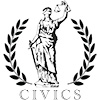| « The Business of Higher Education | Accountability in a Privatized School System » |
Transportation Wed Aug 17 2011
New Report Examines Possibility of Bus Rapid Transit in Chicago
The Metropolitan Planning Council released a report, "Bus Rapid Transit: Chicago's New Route to Opportunity," [PDF] evaluating the potential for Bus Rapid Transit (BRT) in Chicago. As part of the study, the proposed BRT lines would connect with Metra and CTA L stops, as well as help serve communities by improving livability. A BRT system was mentioned in both Mayor Rahm Emanuel's Transition Plan and the Chicago Climate Action Plan.
While BRT uses buses, it is meant to emulate a rail system in some ways. Standard BRT systems require riders to pay at stations before boarding, which allows for faster boarding at stops. BRT stations also usually have a level platform and buses tend to have multiple doors for boarding and exiting. Most systems have a dedicated lane for buses as well as signal prioritized intersections, which allow for buses to move without stopping and to ensure the safety of buses. According to the study, BRT costs about $13.32 million per mile to construct while light rail costs about $35 million per mile and heavy rail tends to cost more than $96.25 million. BRT is already used in Cleveland, Pittsburgh, Las Vegas, Los Angeles and Eugene, Oregon. In Los Angeles, the Metro Liner system originally included the Orange Line, which is highlighted in the report, but another route--the Silver Line--was added in 2009 to connect the city of El Monte with downtown Los Angeles and the city of Gardena. Currently, officials in Los Angeles are extending the Orange Line, which had 22,817 average weekday boardings last month and a total of 591,179 boardings. The extension is expected to be completed in the summer of 2012.
The report recommends 10 BRT lines for Chicago, nine of which would be straight, allowing for quicker travel times. The one that would not be straight would travel Martin Luther King Jr. Drive, Cottage Grove and Stony Island, connecting the Cermak-Chinatown Red Line and McCormick Place with 95th Street. Not only do the suggested routes connect with CTA and Metra rail stops, but also would connect with other proposed BRT lines.
Part of the planning for the proposed BRT included creating routes that would allow people to go to current areas that are centers for employment as well as schools, colleges and health care facilities. A suggested Ashland route would connect with Malcolm X College and the Medical District, both a route on Garfield and the King/Cottage Grove/Stony Island route would connect with University of Chicago and a route travelling 95th Street would get commuters to Advocate Christ Medical Center in Oak Lawn as well as Chicago State University. These routes were selected using 14 "livability metrics" to help meet six federal livability principles, as well as considering the ability to connect with current transit.
The BRT systems would require streets to be a minimum width of 86 feet for right-of-way for BRT. The streets detailed in the report would require both sides of the street to have parking, traffic lanes, and bike lanes. For streets that would have BRT stations in their median, the streets must be at least 97-feet wide, allowing for the station, a dedicated BRT lane, a traffic lane with a left turn lane, bike lane, and parking. As a result, several suggested streets for routes were removed due to their inability to accommodate the requirements.
The plan also only looked at current rail routes and businesses. In some corridors, such as Garfield Avenue, the report suggests that the implementation of BRT could lead to economic growth as the result of improved transportation.
The study also ran a model to help determine possible demand. This showed that transit trips could possibly increase with BRT. From the model, there would be an additional 40,000 trips on transit everyday that would begin and end in BRT corridors due to the increase of options. The model also showed that there could be an increase of trips from residents in surrounding counties due to more options being available for suburban commuters.
The report says that while BRT would help provide more transit options, it would not be a guaranteed fix for congestion in the Chicago area. It is suggested that a BRT plan would be implemented as part of "a comprehensive regional traffic gridlock mitigation plan."
We will have more information later today after the report is released to the public. UPDATE: Further analysis here.











